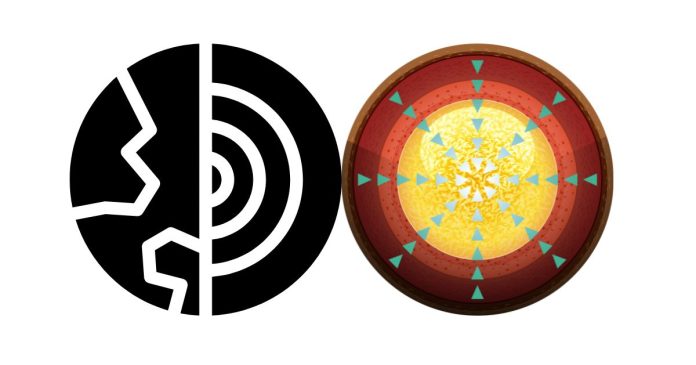The Earth is a complex and dynamic planet, with different layers that play crucial roles in shaping its surface and driving geological activity. Among these layers, the inner and outer cores are the most intriguing, as they are the deepest and least accessible parts of our planet. In this blog post, we will explore what the inner and outer cores are made of, how they differ, and why understanding their composition is so important.
The Structure of the Earth
The Earth is made up of several distinct layers, each with its unique characteristics:
- Crust: The outermost layer, composed of solid rock.
- Mantle: Located beneath the crust, made of semi-solid rock that moves slowly over time.
- Outer Core: A liquid layer made primarily of iron and nickel.
- Inner Core: The innermost layer, which is solid and also composed mainly of iron and nickel.
Understanding the composition of the inner and outer core is essential for understanding how the Earth functions and the processes that lead to phenomena like volcanic eruptions, earthquakes, and the Earth’s magnetic field.
The Outer Core: A Layer of Liquid Metals
The outer core is located beneath the mantle and above the inner core. It is made primarily of liquid iron and nickel, with smaller amounts of lighter elements like sulfur and oxygen. The outer core is about 2,200 kilometers (1,367 miles) thick and is responsible for some of the most important processes on Earth.
- Temperature: The temperature in the outer core ranges from about 4,000°C to 5,000°C (7,232°F to 9,032°F).
- Properties: Because of the high temperatures, the metals in the outer core are in a molten, liquid state. The movement of these liquid metals generates Earth’s magnetic field through a process known as the geodynamo.
The liquid nature of the outer core allows it to flow and create convection currents. These currents, along with the rotation of the Earth, contribute to the formation of the planet’s magnetic field, which protects life on Earth from harmful solar radiation.
The Inner Core: A Solid Iron and Nickel Ball
Beneath the outer core lies the inner core, a solid sphere of metal that is primarily made up of iron and nickel. While the outer core is liquid, the inner core is solid due to the immense pressure it experiences from the layers above.
- Temperature: The inner core is incredibly hot, with temperatures reaching about 5,200°C to 6,000°C (9,392°F to 10,832°F), which is as hot as the surface of the Sun.
- Pressure: The pressure at the inner core is so intense—about 3.6 million times the pressure at the Earth’s surface—that even though the temperatures are extremely high, the metals remain solid.
The inner core is thought to be made up primarily of crystalline iron and nickel, which form a dense, solid ball at the center of the Earth. Despite being solid, the inner core is not static. It is believed to slowly grow over time as the Earth cools, with iron solidifying from the outer core and adding mass to the inner core.
How Do We Know What the Core Is Made Of?
Since the Earth’s core is deep beneath the surface, it is impossible to directly access or sample the materials. However, scientists have been able to study the inner and outer core using seismic waves generated by earthquakes. Seismic waves travel through the Earth and are affected by the materials they pass through. By studying how these waves behave, scientists can infer the composition and physical properties of the core.
- P-Waves: These waves can travel through both solid and liquid. When they pass through the Earth, they are refracted or bent by the liquid outer core, providing clues about its composition.
- S-Waves: These waves cannot travel through liquids, which is why they do not pass through the outer core. This behavior has been crucial in confirming that the outer core is liquid.
Why Is the Core’s Composition Important?
Understanding the composition of the Earth’s core is important for several reasons:
- Magnetic Field: The movement of molten iron and nickel in the outer core generates the Earth’s magnetic field, which protects life from harmful solar and cosmic radiation.
- Earthquakes and Seismic Activity: The core plays a key role in the dynamics of earthquakes and the behavior of seismic waves. Understanding how seismic waves interact with the core helps geologists study the Earth’s interior.
- Geological Processes: The heat from the inner core drives convection currents in the mantle, which is responsible for processes like plate tectonics and volcanic activity on the Earth’s surface.
The Earth’s inner and outer cores are composed primarily of iron and nickel, with the outer core being liquid and the inner core solid. These layers, though far beneath our feet, play crucial roles in the planet’s geological and magnetic activities. While direct study of the core is not possible, scientific techniques like studying seismic waves have allowed us to gain a deep understanding of what these layers are made of and why they are so important to life on Earth.


